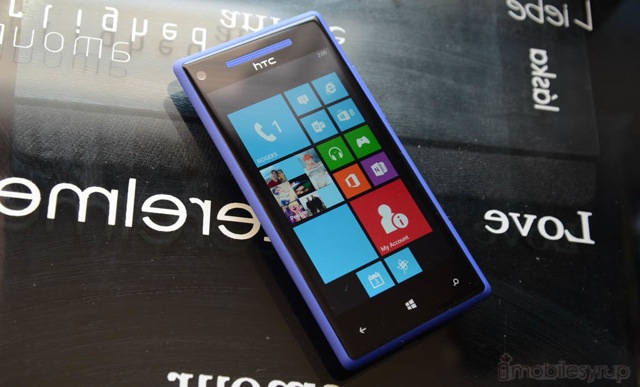
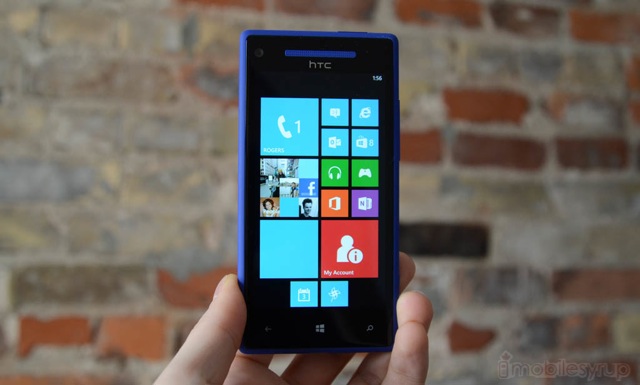
HTC astounded a lot of people with the Windows Phone 8X. When the company’s CEO, Peter Chou, emerged on stage on a brisk New York day, few of the present press were expecting such a remarkable, compact and beautiful device.
The company has taken a lot of hits and has kept on going; from poor sales of its One series Android phones to falling market share and dwindling share price (all of which are correlated), HTC has found a strong partner in Microsoft at an important time.
With powerful specs, a gorgeous 4.3-inch screen and plenty of visual flair, can the HTC 8X make it into your holiday smartphone list? Let’s find out.
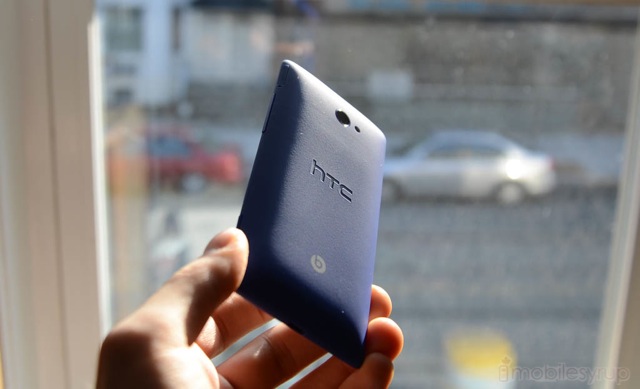
The Good
The HTC 8X is powerful, and it’s gorgeous. This phone is light, slim and feels perfect in the hand; it’s one of those set-it-and-forget-it type feels, except it applies to actually, well, using it. This comes from the relatively tiny form factor (for today’s market), though it’s a lot taller than it initially appears.
The body is made with a similar-feeling matte polycarbonate to its One X sibling, though the material is slightly courser, almost leathery. It’s also a lot narrower than the aforementioned Android flagship, which allows it to slip into of any pocket seamlessly. The sloping edges help the 8X feel thinner than its mid-range 10.1mm frame, and the little touches, such as tiny drilled holes in the back for speaker output, work in its favour.
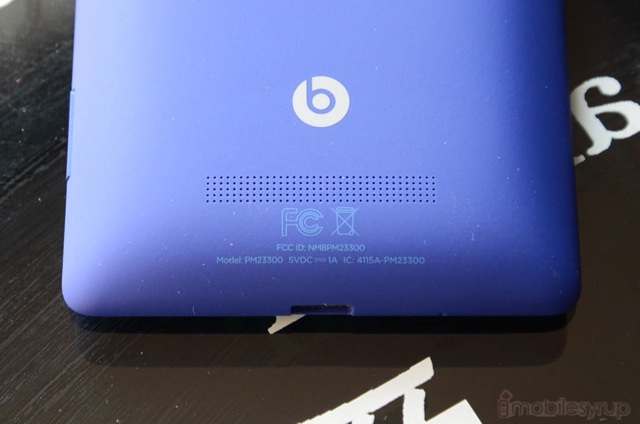
With a top-right power button, slim right-side volume rocker and equally recessed camera shutter button, the 8X puts itself at a disadvantage against the Lumia 920 which, despite its size, operates more effortlessly as a camera. That being said, the low profile nature of the phone lends it a remarkably feeling of self-containment, one that has yet to be rivalled by any phone but the iPhone.

The Super LCD2 display on the Windows Phone 8X is one of the best ever made. It’s sharp, dense and colourful, with accurate colour reproduction, something that can’t be said yet for Samsung’s Super AMOLED screens. While not everything is perfect — Nokia’s Lumia 920 bests the 8X in direct sunlight tests, and blacks could be darker — the phone’s display is in many ways still unparalleled. Unfortunately HTC bested itself with the Super LCD3 display on the Droid DNA, but despite its super high pixel density the 8X is brighter and shows deeper colours.
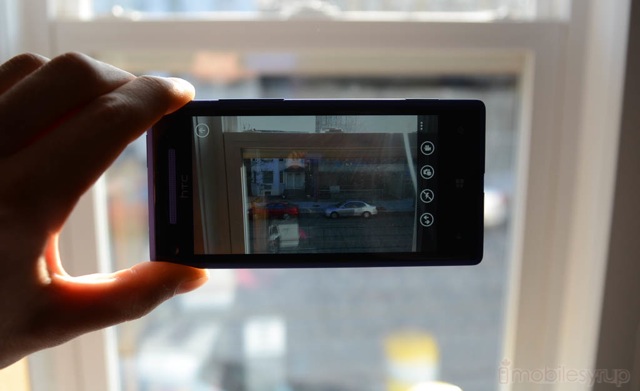
The Windows Phone 8X boasts the same 8MP shooter as the One X and its ilk, but improves upon the Android crowd by offering a wide-angle 2.1MP front-facing camera that is by far the best we’ve seen from a smartphone. Thanks to deep Skype integration in Windows Phone 8, users of the 8X will enjoy unprecedented video quality from the front shooter. It can shoot 1080p video, too, and is controlled by the dedicated Image Sense chip, something in which HTC takes a lot of pride.
Unfortunately the same can’t be said of the rear lens, which is bested in many ways by the Lumia 920, especially in terms of video quality and low-light performance. The 8X takes great photos, and is even better able to focus at close quarters than the Lumia, but results lack the sharpness and dynamic range of the iPhone 5 and Galaxy S III. And while the Lumia 920 currently shoots “soft” photos in daylight, there is potential for improved results, and will likely be corrected in a future software update; the 8X is merely limited by its mediocre sensor.
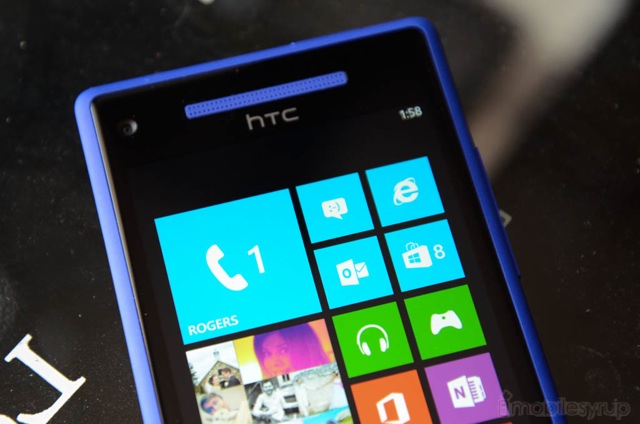
Performance and battery life on the Windows Phone 8X are what one would expect from a flagship device. They’re excellent. I was able to get through an entire day with the device pushing through emails, Twitter notifications, Facebook messages, taking photos and video, and generally doing what one does on a smartphone. The 1800mAh battery is non-removable, but due to Windows Phone’s well-known power efficiency it should last longer than an Android phone with the same size cell.
The phone was not demonstrably swifter or slower than the Lumia 920, likely because they share the same 1.5Ghz dual-core Snapdragon S4 processor and 1GB RAM combo. Some apps exhibited slow load times and poor scrolling performance, but that has more to do with apps that have yet to be optimized for Windows Phone 8 than any fault of the 8X itself. The OS, with its multiple-sized live tiles, superlative keyboard and excellent social media integration, feels spacious and effortless on the 8X.
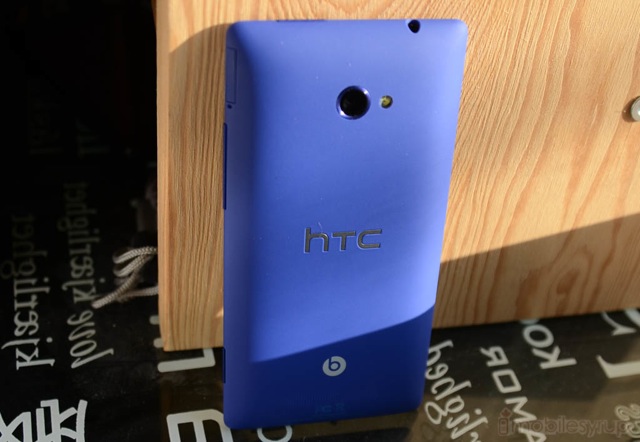
One thing that 8X has going for it over any other device on the market right now is a comparatively powerful headphone amplifier. At 2.55v, it is able to drive headphones noticeably louder than most smartphones, and can reach ear-bleeding levels without distorting. While this is meaningless to most users, on a blind test I was easily able to tell the difference in quality between the One X (good) and the 8X (better) using the same pair of 120-ohm Beyerdynamic headphones.
More importantly, it means that audiophiles with 300-ohm headphones will be able to obtain nearly double the volume from the 8X over an equivalent smartphone. And while most sound aficionados won’t take their $1600 Sennheiser HD 800’s for a walk on the town, in the event they should the 8X will more than suffice.
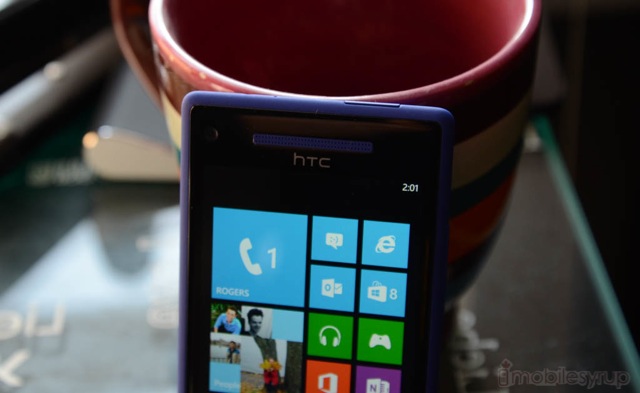
Needs Improvement
The Windows Phone 8X is still a Windows Phone, and that means that despite HTC’s unmatched design ethic and build quality and the operating system’s smooth performance, it is still not quite able to compete with the big boys.
Where Nokia has its own Collection of apps, many of which are good enough to sell Lumia devices on their own, HTC’s homemade assortment is anything but robust. There’s a mediocre photo editing suite, a hub for weather and news, a flashlight and some other odds and ends. It pales in comparison to what is available to Lumia owners, and undermines many of the 8X’s advantages.
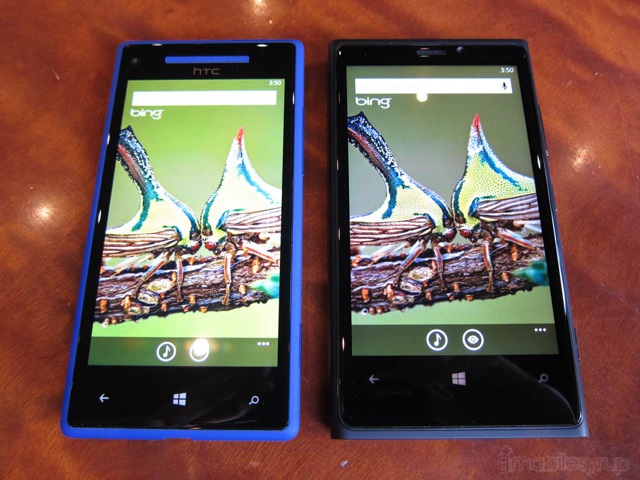
There’s also the question of storage space. You can get the 8GB version of the 8X for free on Rogers with a three-year contract, and Bell sells the 16GB for the same price. Rogers charges $79.99 for the 16GB version but only $20 more for the 32GB Lumia 920, which is arguably better value. Now, the 8X is half the size, or at least seems so, and a good 55g lighter, so it’s certainly going to be more attractive to the average consumer. Just keep in mind that neither device has expandable storage, so go with the phone that will offer you the best value for your money.
The other thing that the 8X lacks is wireless charging. This is neither a necessary feature nor a deal-breaker, but I can see some Nokia fans using it as yet another reason to pick the 920 over the 8X. I’m not so sure it matters. Both devices have the same sensors and radios, including NFC support, but this is true of all modern Windows Phone 8 devices.
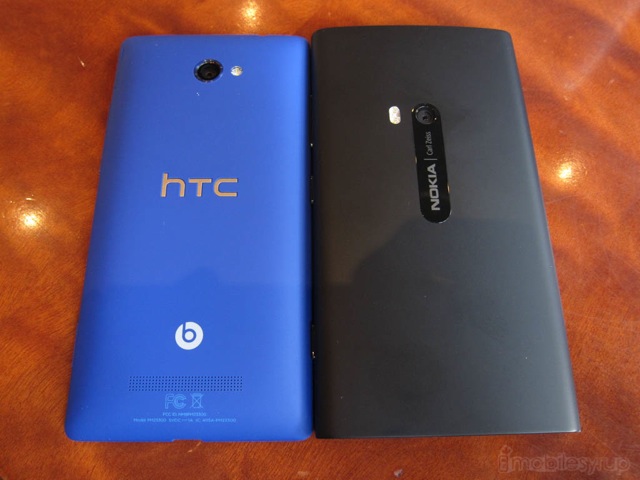
I’d be remiss not to talk about the app situation on Windows Phone 8 as a disadvantage, but it’s well-worn territory, so we’ll skip it. The Windows Phone 8X, for better or worse, has the same third-party app selection as any WP8 device today, and while selection is likely to improve in the coming months — developers are just now updating their apps to take advantage of larger live tiles, quick resume and smooth scrolling — it’s paltry right now.
More importantly, a multi-platform app on Windows Phone is usually a feature or three behind its iOS or Android equivalent, and that isn’t good news for those endorsing the platform. When Facebook, Twitter, Foursquare or Evernote takes six months to roll out big changes to Microsoft’s mobile OS it puts users at a huge disadvantage. Some big name apps like Twitter have not seen feature updates in over a year.
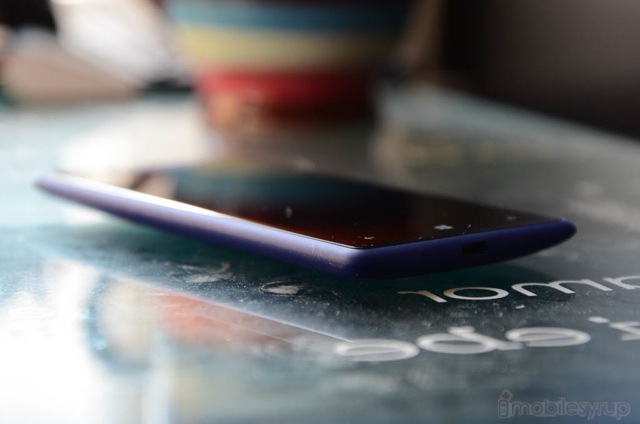
The Sum
HTC’s Windows Phone 8X is a delightful phone with excellent performance, decent battery life, a gorgeous screen in a unique form factor. It has the promise of being one of the best phone’s on the market, but is disadvantaged by a half-baked app store and a lack of Nokia’s proprietary apps.
Nevertheless, the 8X has a great camera, best-in-class sound quality with Beats Audio and a powerful headphone amplifier, and a number of features that make it worth your time. Considering it is being heavily discounted on both Rogers and Bell at the moment, it may be worth looking into.
MobileSyrup may earn a commission from purchases made via our links, which helps fund the journalism we provide free on our website. These links do not influence our editorial content. Support us here.


